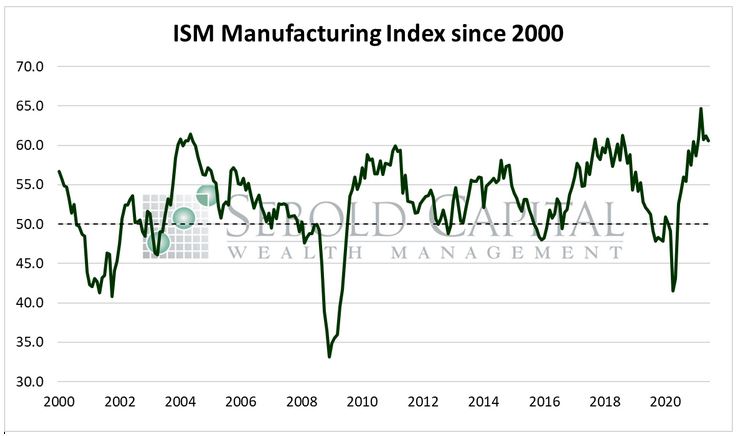 The Manufacturing PMI (formerly the ISM Manufacturing Index) is derived from a survey of purchasing managers and their outlook on overall conditions by looking at factors such as orders for durable goods, industrial production, and hiring. It gives a general direction rather than the specific strength of the factory sector and manufacturing activity in the U.S. A reading above 50 is an indicator that the manufacturing sector is growing while a reading below 50 indicates a contraction.
The Manufacturing PMI (formerly the ISM Manufacturing Index) is derived from a survey of purchasing managers and their outlook on overall conditions by looking at factors such as orders for durable goods, industrial production, and hiring. It gives a general direction rather than the specific strength of the factory sector and manufacturing activity in the U.S. A reading above 50 is an indicator that the manufacturing sector is growing while a reading below 50 indicates a contraction.
In June, the Manufacturing PMI declined by 0.6 percentage points to a level of 60.6. Despite the decrease, this marks the thirteenth consecutive month of expansion for the manufacturing industry and for the overall economy. All six major manufacturing industries included in the survey reported moderate to strong growth last month, and seventeen out of the eighteen total industries that make up the report registered growth over the same period.
The Manufacturing Index is comprised of several equally weighted sub-indexes that measure conditions in the industry. Consumption and demand registered growth compared to the previous month, however, businesses and their suppliers continue to struggle to meet these rising levels of demand. The manufacturing industry continues to face several challenges such as widespread shortages of both raw materials and labor, long lead times for basic materials, difficulties transporting products, and rising input costs.
The sub-index that measure employment slipped back into contraction territory after six months of expansion, reflecting the ongoing shortage of labor. Order backlogs remain elevated, pointing to input-driven constraints. Prices continued their alarming rise, with the corresponding index reaching its highest level since 1979. The index rose 4.1 percentage points last month to a level of 92.1 and has surged 12.2% since January. If the last six months of the index are annualized, prices will have increased by 24.9% in 2021. Nonetheless, respondents remain optimistic about the rising consumer demand and hope that some of the shortages, including labor and commodities, will ease later in the year.

July 1, 2021
